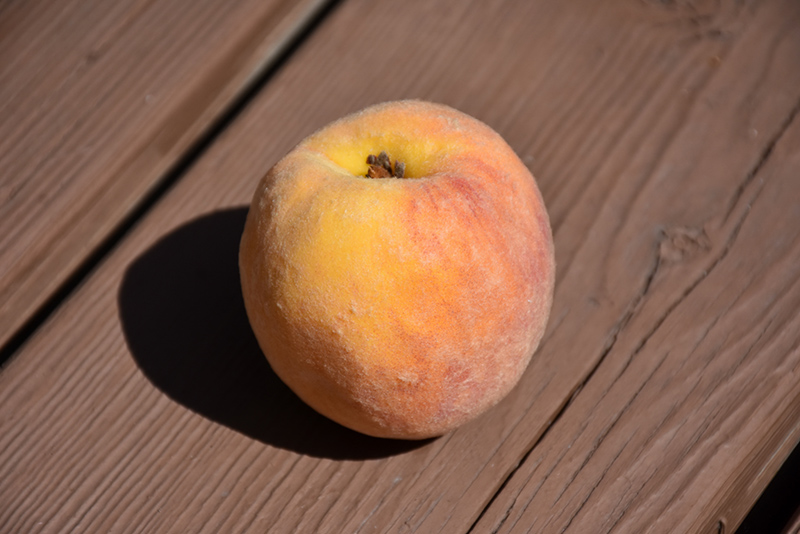
PLANT
SEARCH
Honey Babe Peach
Prunus persica 'Honey Babe'
Height: 10 feet
Spread: 8 feet
Sunlight:
![]()
Hardiness Zone: 5a
Other Names: Common Peach
Description:
A beautiful dwarf selection, bearing golden peaches flushed with red that are firm and sweet; showy pink flowers in spring on a low, compact habit; freestone; susceptible to late spring freezes and disease, needs full sun and well-drained soil
Edible Qualities
Honey Babe Peach is a small tree that is commonly grown for its edible qualities. It produces large gold round fruit (technically 'drupes') with a red blush and yellow flesh which are usually ready for picking in mid summer. Note that the fruits have hard inedible pits inside which must be removed before eating or processing. The fruits have a sweet taste and a firm texture.
The fruit are most often used in the following ways:
- Fresh Eating
- Cooking
- Baking
- Preserves
- Canning
Features & Attributes
Honey Babe Peach is smothered in stunning clusters of fragrant shell pink flowers along the branches in early spring, which emerge from distinctive rose flower buds before the leaves. It has dark green deciduous foliage. The narrow leaves turn yellow in fall. The fruits are showy gold drupes with a red blush, which are carried in abundance in mid summer. The fruit can be messy if allowed to drop on the lawn or walkways, and may require occasional clean-up.
This is a deciduous tree with a shapely oval form. Its average texture blends into the landscape, but can be balanced by one or two finer or coarser trees or shrubs for an effective composition. This plant will require occasional maintenance and upkeep, and is best pruned in late winter once the threat of extreme cold has passed. Gardeners should be aware of the following characteristic(s) that may warrant special consideration;
- Messy
- Insects
- Disease
Aside from its primary use as an edible, Honey Babe Peach is sutiable for the following landscape applications;
- Accent
- Hedges/Screening
- General Garden Use
- Orchard/Edible Landscaping
- Container Planting
Planting & Growing
Honey Babe Peach will grow to be about 10 feet tall at maturity, with a spread of 8 feet. It has a low canopy with a typical clearance of 1 foot from the ground, and is suitable for planting under power lines. It grows at a medium rate, and under ideal conditions can be expected to live for 40 years or more. While it is considered to be somewhat self-pollinating, it tends to set heavier quantities of fruit with a different variety of the same species growing nearby.
This tree is typically grown in a designated area of the yard because of its mature size and spread. It should only be grown in full sunlight. It does best in average to evenly moist conditions, but will not tolerate standing water. It is not particular as to soil type or pH. It is highly tolerant of urban pollution and will even thrive in inner city environments, and will benefit from being planted in a relatively sheltered location. This is a selected variety of a species not originally from North America.
Honey Babe Peach is a good choice for the edible garden, but it is also well-suited for use in outdoor pots and containers. Because of its height, it is often used as a 'thriller' in the 'spiller-thriller-filler' container combination; plant it near the center of the pot, surrounded by smaller plants and those that spill over the edges. It is even sizeable enough that it can be grown alone in a suitable container. Note that when grown in a container, it may not perform exactly as indicated on the tag - this is to be expected. Also note that when growing plants in outdoor containers and baskets, they may require more frequent waterings than they would in the yard or garden.

